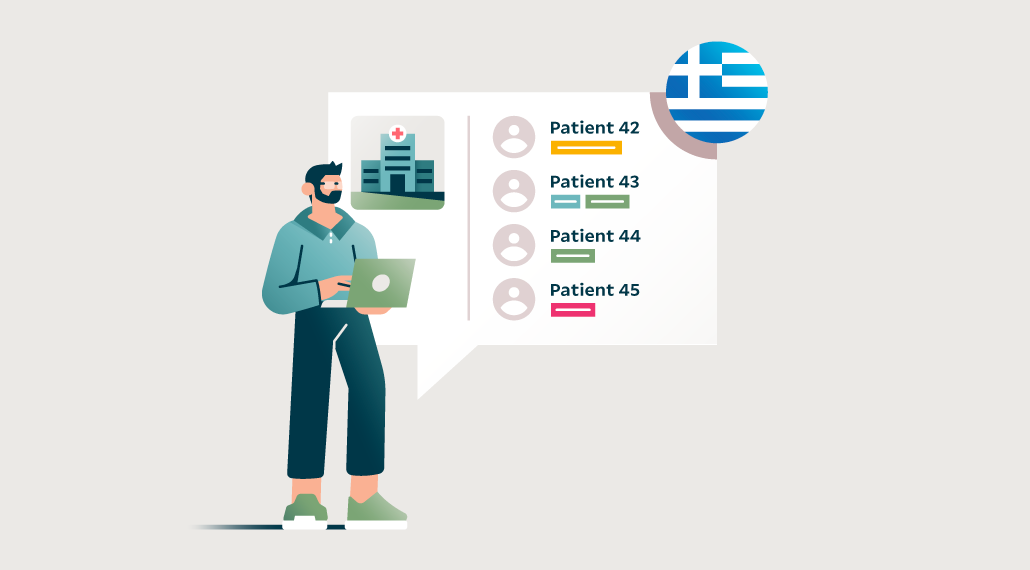December 8th, 2023
How to Analyze Eligibility Criteria Early to Improve Diversity in Clinical Trials
By OneStudyTeam
.png)
When you ensure your clinical trials are set up to enroll a representative patient population, you’re more likely to keep timelines and goals on track across your portfolio. Strategically enrolling a representative population from the start prevents recruitment delays, improves the validity of trial results, and reduces the need for postmarketing data collection to confirm the success of your FDA Race and Ethnicity Diversity Plan.
What’s one critical way to improve diversity in your clinical trials?
Analyze eligibility criteria early – both before it starts impacting patient enrollment and while it’s impacting enrollment. Here are a few actions to take with eligibility criteria analysis:
- When designing a new trial, assess your inclusion/exclusion criteria template.
- When designing a trial in later stages of therapeutic development, consider opportunities to broaden inclusion/exclusion criteria.
- When actively enrolling a new trial, analyze patterns in inclusion/exclusion criteria failures across each patient population and consider opportunities to amend the protocol.
When designing a new trial, assess your inclusion/exclusion criteria template.
At times, clinical trial eligibility criteria templates are applied across trials, or certain inclusion/exclusion criteria are commonly added to each protocol. The FDA points out in November 2020 draft guidance that this practice can exclude “certain populations from trials without strong clinical or scientific justification (e.g., older adults, those at the extremes of the weight range, those with malignancies or certain infections such as HIV, and children).” Other common exclusions could be based on language (if patients don’t speak English, for example), or inflexible schedules (if patients are only available in the evenings after work, for example).
Similarly, 2021 recommendations of the ASCO–Friends of Cancer Research Prior Therapies Work Group acknowledge the common implementation of restrictions based on prior therapies patients have received. Two-thirds of the 57 trials they examined in 2019 included prior therapy as an eligibility criterion. The group says in their recommendations: “Restrictive eligibility criteria induce differences between clinical trial and ‘real-world’ treatment populations… Clinical trial sponsors and regulators should thoughtfully re-examine the use of prior therapy exposure as selection criteria to maximize clinical trial participation.”
To make the most of your applicant pool, assess your inclusion/exclusion criteria template, or the criteria that tend to automatically carry over from one trial to the next. Are they truly necessary to ensure patient safety? Or can certain criteria be adjusted to meet more patients – and more diverse patients – where they are?
When designing a trial in later stages of therapeutic development, consider opportunities to broaden inclusion/exclusion criteria.
According to the aforementioned FDA draft guidance, as therapeutic development continues, you’re able to assess data on interactions between medications and data on excretory and metabolic pathways to determine appropriate adjustments in dosing. As a result, the FDA says, “There should be fewer exclusions related to concomitant medications or comorbidities. Similarly, as the safety experience with a product increases, eligibility criteria should be broadened to include more medically complex participants; any remaining exclusions should be justified.”
As you design each later-phase trial with a greater understanding of the corresponding investigational product, reexamine eligibility criteria to determine safe updates that can enable more patients to enroll across demographics, to then receive that product.
When actively enrolling a new trial, analyze patterns in I/E criteria failures across each patient population and consider opportunities to amend the protocol.
While updating eligibility criteria for clinical trials during planning is one of the earliest steps you can take to improve inclusion, you can still be proactive during the recruitment and enrollment stages of a trial. Sponsors who use the StudyTeam platform to track recruitment and enrollment progress have access to an Inclusion and Exclusion Criteria Analysis report that aggregates top reasons for patient ineligibility across all sites for each trial. As site teams pre-screen patients, they quickly and easily input de-identified eligibility and demographic information into the StudyTeam platform to generate these sponsor reports.
Sponsors can filter eligibility criteria data for clinical trials by:
- Criteria
- Country
- Site
- Recruitment source
- Race
- Ethnicity
With these insights, you can quickly access a big-picture view of which criteria warrant closer examination – are they all necessary for the safety of the trial, or are amendments possible? You can also get granular and view how specific patient populations are being excluded from the trial based on specific criteria. With these diversity insights in StudyTeam, you can adjust recruitment strategies while enrollment is still taking place.
Example: Say you’re low on enrollment numbers for patients with a “Native Hawaiian or Other Pacific Islander” racial background. Within StudyTeam’s Inclusion and Exclusion Criteria Analysis report, you can click on the Race tab and zoom in to see that Inclusion Criterion 3 has a high failure rate for that population. You can then take a closer look at that inclusion criterion to determine whether it can be safely relaxed in order to enroll a larger Native Hawaiian or Other Pacific Islander patient population.
.gif?width=1152&height=648&name=IE%20Criteria%20Report%20Gif%20-%20with%20Diversity%20Insights%20(1).gif)
Analyze eligibility criteria early during trial design, recruitment, and enrollment to increase diversity in clinical trials.
Don’t let historical clinical trial eligibility criteria standards and templates automatically thin out the patient pool. Don’t let a lack of early visibility into eligibility criteria failures be the reason recruitment and enrollment timelines and goals aren’t met. Reassess eligibility criteria during trial design and invest in the right technology to gain early insights into eligibility criteria failures while they’re happening during recruitment and enrollment. That’s how you ensure – and accelerate – the enrollment of representative populations in your clinical trials.
Related Posts

How Does a Trial Manager in Greece Improve Clinical Trial Operations with StudyTeam®?
Dimitris Tziogas, local trial manager at a biotechnology company in ...
Read More
How to Address Key Clinical Trial Challenges, According to Clinresco Centres in South Africa
There’s no single solution to overcoming a research site’s specific ...
Read More
3 Clinical Trial Billing Challenges Research Sites Solve with StudyTeam
Challenge 1: Complicated coverage analysis Challenge 2: Tedious budgeting ...
Read More

.png?width=64&name=OST%20Transparent%20(1).png)